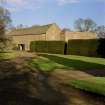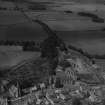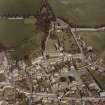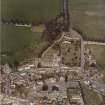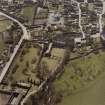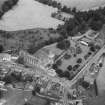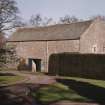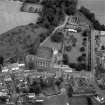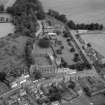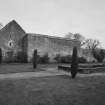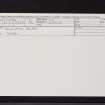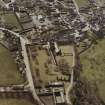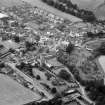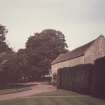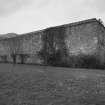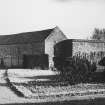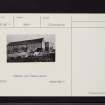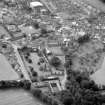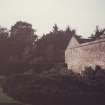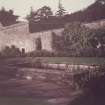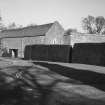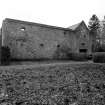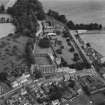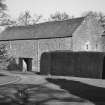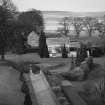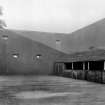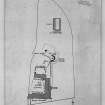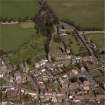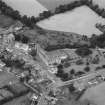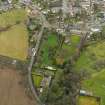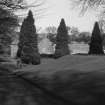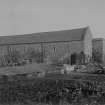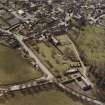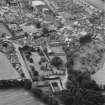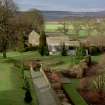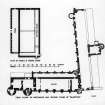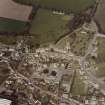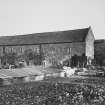Pricing Change
New pricing for orders of material from this site will come into place shortly. Charges for supply of digital images, digitisation on demand, prints and licensing will be altered.
Upcoming Maintenance
Please be advised that this website will undergo scheduled maintenance on the following dates:
Thursday, 9 January: 11:00 AM - 3:00 PM
Thursday, 23 January: 11:00 AM - 3:00 PM
Thursday, 30 January: 11:00 AM - 3:00 PM
During these times, some functionality such as image purchasing may be temporarily unavailable. We apologise for any inconvenience this may cause.
Falkland Palace, Royal Stables And Tennis Court
Stable(S) (16th Century), Tennis Court (16th Century)
Site Name Falkland Palace, Royal Stables And Tennis Court
Classification Stable(S) (16th Century), Tennis Court (16th Century)
Alternative Name(s) Caichpule
Canmore ID 29798
Site Number NO20NE 3.02
NGR NO 25384 07645
Datum OSGB36 - NGR
Permalink http://canmore.org.uk/site/29798
- Council Fife
- Parish Falkland
- Former Region Fife
- Former District North East Fife
- Former County Fife
NO20NE 3.02 25384 07645
(NO 2539 0764) Royal Stables (NAT)
OS 6" map (1938)
The stable-building standing in the low ground to the north of Falkland Palace (NO20NE 3.00) is possibly the new stable built in 1531-2.
Attached to it is possibly the only surviving example in Scotland of the oblong enclosed tennis-courts with timber penthouses, formerly belonging to the King.
RCAHMS 1933
As described, planned and photographed by the Commission.
Visited by OS (WDJ) 21 March 1967
Awaiting DES 2000 entry (2000/062).
Watching Brief (21 July 2016)
NO 253 076 A watching brief was carried out on 21 July 2016 during the excavation of a new water/drainage trench to the clubhouse. No finds or features of archaeological significance were recorded.
Archive: NRHE
Funder: Falkland Amateur Football Club
Derek Hall
(Source: DES, Volume 17)
Note (October 2017)
A Royal Game
Built for James V between 1539 and 1541, the Royal Tennis Court at Falkland Palace is believed to be the earliest surviving real tennis court in Britain. Its construction was contemporary with the remodelling of Falkland into a Renaissance palace, perhaps the most significant phase in its architectural history. It is the only 'roofless' real tennis court in active use and the sole surviving example of the earlier jeu quarré court design in the world. It is a category A listed building and is managed and maintained by The National Trust for Scotland.
The transformation of Falkland Palace under James V was illustrative of the close links between the Scottish and French Courts at this time. James had visited the French Court in 1537, and had two French queens. French master masons worked alongside his Scottish craftsmen to build the extended and enlarged renaissance residence at Falkland. The presence of a tennis court here is another example of French influence on James’s residence. Real tennis, or ‘Caitch’, was developed in France perhaps as early as the 12th or 13th centuries, and seems to have been brought to Scotland in the 16th century through royal ties between the two countries. There were two versions of the game; jeu quarré and jeu a dedans. The jeu quarré court at Falkland has penthouses on two sides instead of three, and four window-like apertures at the service end walls.
‘Real Tennis’
Sometimes known as 'the Sport of Kings', real tennis was played almost exclusively by Royalty. Interest in the game waned in Scotland after the removal of the Monarchy to London in 1603. The game was revived in the 1800s, with indoor real tennis courts continuing to be built well into the 20th century.
The sport is called ‘real tennis’ to differentiate it from lawn tennis. The term actually dates to the 20th century. The game played at Falkland required a larger court and had different rules, strategies, techniques and scoring system. The side walls and sloping roofs of the internal 'penthouses' (spectator galleries) along the sides are integral to the playing of the game. There are currently less than 50 real tennis courts remaining in the world. One other example in Scotland is at Crosbie Road in Troon.
The rules of lawn tennis were established in 1874 by Major Walter Wingfield. The adapted court and revised rules used in the lawn game increased the speed of play and it soon became the preferred version for many players.
A society was set up to preserve and reinvigorate the game of Royal Tennis in Fife in the 1970s, following demonstrations of the game at Falkland in 1958 and in 1963. The Falkland Royal Tennis Club continues to meet and play at the court.
Dr Kirsty Owen - Archaeology and World Heritage Team, Historic Environment Scotland















































